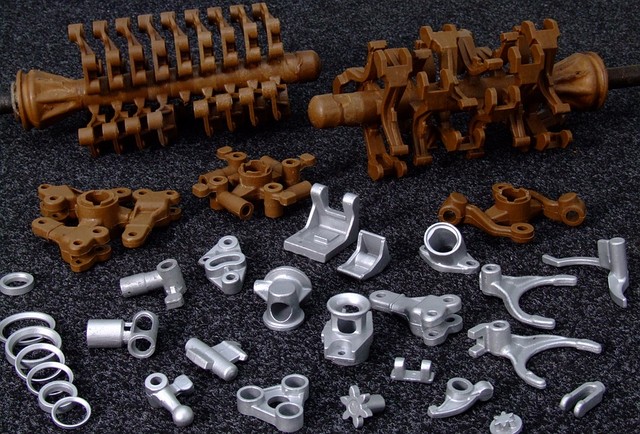Comparison of ethyl silicate and aqueous binders

Currently, water-based binders based on colloidal silicon dioxide are used for precision casting of smelted models along with ethyl silicate binders.
The information below is intended to help foundry employees in choosing a ready-made binder, taking into account all the features of products available on the market.
Manufacturers of water-based binders declare the following attractive differences between these materials: they are not flammable and do not emit organic solvents when used.
Nevertheless, the experience of consumers of water binders indicates the need to solve a number of technological and logistical issues caused by the following features of water binders when using them:
- ceramic suspension based on them does not wet the surface of the wax model well;
- surface defects may appear on the inner surface of the shell;
- low mold strength before calcination;
very high requirements for climatic conditions in the drying chamber; - very long drying of the last layers (from 4 to 8 hours, and the last layer is 12-24 hours). The application of layers with insufficient drying of previous coatings leads to the destruction of the mold during the heating of the model composition;
- special requirements for transportation and storage at subzero temperatures (freezes);
- shelf life less than a year;
- for a full-fledged formation of the shell, several brands of an aqueous binder may be required;
- the need to use additional components (surfactants and corresponding defoamers) that increase wettability.
- the need to use special concentrates of water-soluble polymers to ensure acceptable “raw” strength and polymers, and increase the drying speed.
- the tendency of the components of the aqueous binder to bacterial destruction. The need to use components to suppress the activity of microorganisms and prevent the development of bacterial colonies.
- they are not suitable when working with models made of water-soluble model masses (for example, urea).
- The listed features of aqueous binders can lead to a noticeable increase in the cost of their use due to the use of additional components, and, accordingly, require an expansion of the nomenclature of raw materials for the foundry.
Drying of shell forms based on an aqueous binder should be very intensive. Ceramic molds based on ethyl silicate dry noticeably faster. Some consumers, in agreement with manufacturers of aqueous binders, are forced to use organic solvents, such as acetone or alcohol, to speed up the drying process. In some cases, this is unacceptable, since the ingress of organic solvents, acids and electrolytes into a ceramic suspension based on aqueous binders leads to a sharp reduction in the viability of the suspension.
For stabilization, aqueous binders contain sodium ions in their composition. This feature of the composition of water binders is associated with the appearance in some cases of deformation (“landslide”) of the shape and violation of its geometry.
Some manufacturers recommend adding non-hydrolyzed ethyl silicate-40 in an amount of 5-15% of the aqueous binder taken for the preparation of the suspension to increase the strength of ceramic shells. Or to solve the problem of poor wettability of the suspension on the aqueous binder surface of the wax model by applying a suspension based on ethyl silicate-40 to the first two layers.
In one study, it was noted that when finely dispersed aluminum powder ASD-4 is added to the suspension, the suspension life time is significantly reduced (the suspension becomes unsuitable for further use 2 days after the addition of ASD).
The listed disadvantages are deprived of ready-made binders based on ethyl silicate-40.
Thus, foundries, when switching to the use of water-based binders, may face hidden costs to achieve similar indicators of the yield of suitable casting and the quality of castings, which are provided by ethyl silicate ready-made binders.
